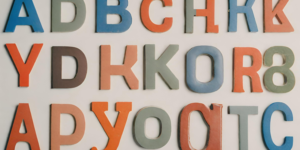Then vs. Than: Quick Tips to Never Get Them Mixed Up Again
Common English Errors Blogs “Let’s Learn, Explore, and Connect to the World” Then vs. Than: Quick Tips to Never Get Them Mixed Up Again Introduction


 Homophones are words that sound alike but have different meanings and often different spellings, presenting a unique challenge in English language learning. Among the most commonly confused homophones are “there,” “their,” and “they’re.” Each of these words serves a distinct grammatical purpose and cannot be used interchangeably, yet they are frequently mistaken for one another due to their identical pronunciations. This mix-up not only leads to errors in writing but can also alter the meaning of sentences, making it crucial for both native speakers and English learners to master their correct usage. This blog post will dig into the definitions, uses, and common mistakes associated with these three homophones. By understanding their differences and learning how to use them correctly, readers can significantly improve the clarity and precision of their writing. Let’s explore these pivotal aspects of English grammar to ensure accurate and effective communication.
Homophones are words that sound alike but have different meanings and often different spellings, presenting a unique challenge in English language learning. Among the most commonly confused homophones are “there,” “their,” and “they’re.” Each of these words serves a distinct grammatical purpose and cannot be used interchangeably, yet they are frequently mistaken for one another due to their identical pronunciations. This mix-up not only leads to errors in writing but can also alter the meaning of sentences, making it crucial for both native speakers and English learners to master their correct usage. This blog post will dig into the definitions, uses, and common mistakes associated with these three homophones. By understanding their differences and learning how to use them correctly, readers can significantly improve the clarity and precision of their writing. Let’s explore these pivotal aspects of English grammar to ensure accurate and effective communication.

Homophones are words that sound the same but differ in meaning, spelling, or both, making them some of the trickier components of the English language to learn. The reason they cause confusion is primarily due to their similar sound, which can lead to errors in writing, especially when the nuances of their meanings are not well understood. These mistakes are not just common among learners of English but also occasionally trip up native speakers.
Understanding and mastering the correct usage of homophones is crucial because they can significantly affect the clarity of communication. Misusing homophones can lead to misunderstandings and ambiguity in written texts. To use them correctly, it is essential to grasp their definitions and the context in which they are used. This understanding begins with exploring each homophone in detail, starting with the commonly mixed-up trio: “there,” “their,” and “they’re.”
 The word “there” is an adverb, a pronoun, or a noun, which serves multiple functions in sentences. As an adverb, it is used to indicate location. It can signify a place that is not here; for example, “The book is over there.” This usage is one of the most common and helps indicate spatial relationships.
The word “there” is an adverb, a pronoun, or a noun, which serves multiple functions in sentences. As an adverb, it is used to indicate location. It can signify a place that is not here; for example, “The book is over there.” This usage is one of the most common and helps indicate spatial relationships.
When used as a pronoun, “there” introduces sentences where the verb precedes the subject, typically referred to as existential sentences. It is used to indicate that something exists or happens. For example, in the sentence “There are three books on the shelf,” “there” introduces the existence of the books.
 Furthermore, “there” can function as a noun, although this usage is less common. In this capacity, it refers to a state or condition, as in the phrase “getting from here to there.” This usage is more abstract and is often philosophical or reflective about the journey between two different states or conditions.
Furthermore, “there” can function as a noun, although this usage is less common. In this capacity, it refers to a state or condition, as in the phrase “getting from here to there.” This usage is more abstract and is often philosophical or reflective about the journey between two different states or conditions.
The versatility of “there” can make it confusing, but the key to understanding its correct application lies in context. Whether indicating a location, introducing a sentence, or describing a state, “there” is always used to point out or declare something. It is never used to denote possession, which is where it often gets confused with “their.”
It’s also important to note that “there” is often used in idiomatic expressions and informal speech, such as “there you go” or “there it is,” where it serves to emphasize a point or a conclusion reached, further showcasing its diverse usage in English language communication.
The word “their” is a possessive adjective used to indicate ownership or association belonging to some specific people or things previously mentioned or easily identified in the context. Unlike “there,” which relates to location or existence, “their” refers directly to possessions or associations with people, animals, or things. It always precedes a noun, modifying it to denote possession.

For example, in the sentence “Their house is at the end of the street,” “their” modifies “house” to express that the house belongs to them. It sets the context of ownership and is specific to the subjects to which it refers. Similarly, in “Their opinions vary greatly,” “their” connects the noun “opinions” to the owners of these thoughts, indicating that these are the opinions held by them.
The confusion often arises not from its usage but from its sound, which is homophonous with “there” and “they’re.” This can lead to errors in writing where one might incorrectly substitute “their” with one of these homophones. However, remembering that “there” is always used in contexts of ownership can help clarify its correct application.

Because “their” addresses ownership, it is inherently plural, though it is also used singularly in cases respecting gender neutrality, such as in “Someone left their book on the table.” Here, “their” allows for an unspecified gender of the person who owns the book, aligning with contemporary efforts to use inclusive language.
As society moves towards more gender-neutral expressions, the use of “there” has become even more prevalent, highlighting its importance not only in grammatical accuracy but also in social communication. By understanding and using “their” correctly, one can enhance both the clarity and inclusivity of their communication.
“They’re” is a contraction of the words “they” and “are,” which serves as a straightforward way to streamline speech and writing. This form is typically used in informal settings and is very common in spoken English. It combines a pronoun and a verb, indicating a present action or state being experienced by multiple subjects.
 For example, in the sentence, “They’re going to the movies tonight,” “they’re” signifies that the group referred to as “they” is currently planning or intending to go to the movies. This usage demonstrates action associated with a subject in the present tense, which is a key feature of “they’re.”
For example, in the sentence, “They’re going to the movies tonight,” “they’re” signifies that the group referred to as “they” is currently planning or intending to go to the movies. This usage demonstrates action associated with a subject in the present tense, which is a key feature of “they’re.”
 The contraction “they’re” can also describe a current state of being, as seen in “They’re happy with the results.” Here, it is used to express the emotions or conditions of the subjects at the moment. Contractions like “they’re” are particularly useful for making the language flow more naturally and mimicking spoken language in written form.
The contraction “they’re” can also describe a current state of being, as seen in “They’re happy with the results.” Here, it is used to express the emotions or conditions of the subjects at the moment. Contractions like “they’re” are particularly useful for making the language flow more naturally and mimicking spoken language in written form.
The confusion with “they’re” often arises from its phonetic similarity to “there” and “their.” To distinguish “they’re” from the others, it is helpful to remember that “they’re” can always be expanded into “they are.” If substituting “they are” into the sentence preserves the meaning, then “they’re” is the correct choice.
This rule provides a simple test to avoid misuse:

(Does not make sense as “They are book is on the table.”)

(Makes sense as “They are waiting for us.”)
By understanding the contraction “they’re” and its applications in denoting actions or states, users can enhance both the accuracy and fluidity of their language usage, ensuring clear communication, especially in informal contexts.
The confusion among “there,” “their,” and “they’re” is a classic example of homophones causing errors in English, largely because they sound identical but have very different meanings and uses. The misuse of these words can significantly alter the message of a sentence, leading to potential misunderstandings and ambiguity. Below are detailed examples of common errors with these homophones, alongside explanations of how such mistakes change the intended meaning.

In this incorrect sentence, “their” wrongly implies possession, which makes no sense in the context. The correct word, “they’re,” indicates that the subject “they” is performing the action of discussing.

Here, “there” incorrectly refers to a location when the sentence intends to show possession of the car by “them.” “Their” is the right choice as it correctly identifies ownership of the car.

This example shows “they’re” used mistakenly to denote a location, which is actually the role of “there.” “They’re” should only be used when it can be expanded to “they are,” which is not applicable in this context.
These examples highlight how each incorrect usage leads to a sentence that either makes no sense or conveys a different meaning than intended. Such errors are not just grammatical inaccuracies; they can confuse the reader or listener about what is being discussed.

Misunderstood context: “They left their coats over there because they’re going to get wet.”
This sentence correctly uses all three forms, showing how intricate their application can be. It mentions “their coats” (possession), “over there” (location), and “because they’re going to get wet” (action/state).
Mistakes often occur when writers or speakers do not pay close attention to the grammatical role each word should play in a sentence. Understanding the distinct functions of “there,” “their,” and “they’re” can help prevent these common errors:
By carefully considering what each word is meant to express within a sentence, writers, and speakers can greatly improve their accuracy and clarity in communication.
Distinguishing between “there,” “their,” and “they’re” can be challenging, but several practical tips can help remember and apply the correct usage consistently. These strategies focus on understanding the fundamental differences in meaning and function, which can enhance both writing and speaking skills.




By incorporating these tips into daily writing and speaking habits, individuals can significantly reduce errors related to these homophones. Regular practice and mindfulness in applying these strategies will improve both the accuracy and clarity of communication, leading to more effective and confident language use.
 Mastering the correct use of “there,” “their,” and “they’re” is essential for clear and effective communication in English. These homophones, while sounding identical, carry different meanings and serve unique functions within sentences. Misusing them can not only lead to confusion but also detract from the credibility of your writing.
Mastering the correct use of “there,” “their,” and “they’re” is essential for clear and effective communication in English. These homophones, while sounding identical, carry different meanings and serve unique functions within sentences. Misusing them can not only lead to confusion but also detract from the credibility of your writing.
To avoid common pitfalls, it’s important to understand the distinct roles these words play. Remember: “there” indicates location or existence, “their” denotes possession, and “they’re” is a contraction for “they are,” used to describe actions or states of being. By applying the practical tips provided, such as using mnemonic devices, practicing with replacement, and diligent proofreading, you can reinforce their correct usage.
 Adopting these techniques will not only increase your grammatical accuracy but also enhance your overall language abilities. As with any aspect of language learning, regular practice and mindfulness are key to success. Keep challenging yourself to use “there,” “their,” and “they’re” correctly, and over time, it will become second nature. With a clear understanding and consistent application, you can ensure that your communication is both accurate and impactful.
Adopting these techniques will not only increase your grammatical accuracy but also enhance your overall language abilities. As with any aspect of language learning, regular practice and mindfulness are key to success. Keep challenging yourself to use “there,” “their,” and “they’re” correctly, and over time, it will become second nature. With a clear understanding and consistent application, you can ensure that your communication is both accurate and impactful.
Common English Errors Blogs “Let’s Learn, Explore, and Connect to the World” Then vs. Than: Quick Tips to Never Get Them Mixed Up Again Introduction
Digital Marketing Blogs “Let’s Learn, Explore, and Connect to the World” Facebook Live and Video Marketing: Engaging Audiences in Real-Time and Creating Content Introduction In
Discover the joy of conversation with “Comic Collections: A Compilation of Daily Professional and Casual Conversations,” a whimsically illustrated comic book that transforms talking into an adventure. Ideal for those eager to polish their chatting skills, this light-hearted guide is a trove of insights presented in a uniquely entertaining format.



